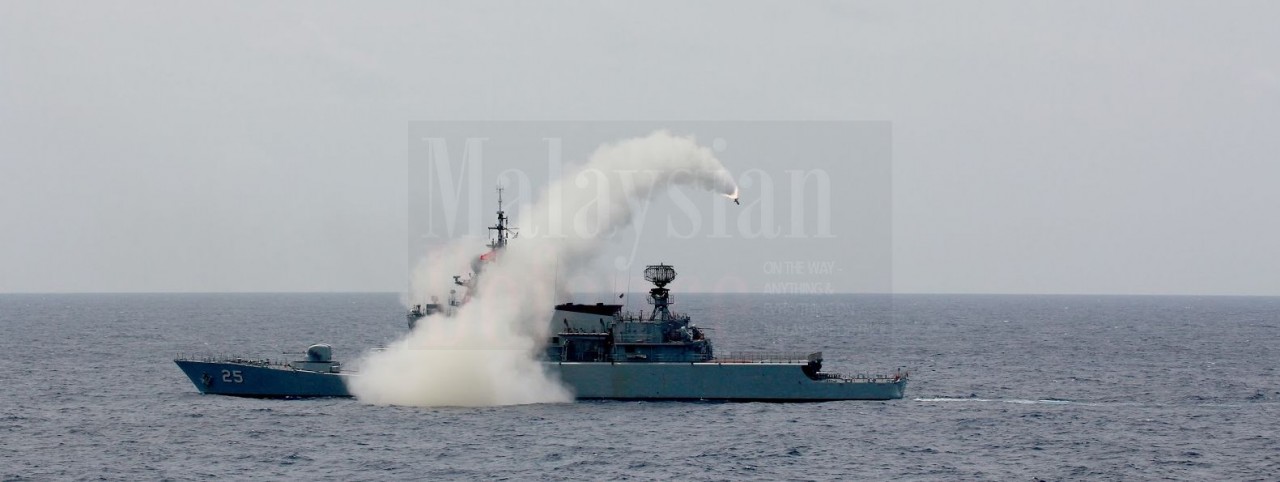
SHAH ALAM: Digital caps for the RMN. It appears that the RMN had issued digital flat caps as part of its digital camouflage which were introduced three years ago. Previously the navy light blue digital camo – known as the operational uniform – were worn with the beret.
The ball cap was part of the digital camo when introduced, however it has not seen widespread usage since then. It is unclear why the ball cap was not issued earlier but RMN Chief Adm. Reza Mohd Sany started wearing it during visits to operational units earlier this year.
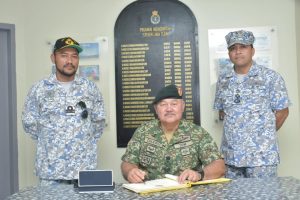
The mass usage of the digital cap was seen at the opening ceremony of Eks KerisMas at Kuantan this morning. As I was unable to make it to Kuantan this morning, I am using the pictures and article by Air Times for this post.
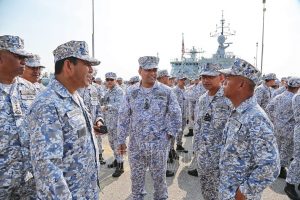
From the pictures, it appears that the digital cap issued looked different from the ones that were made earlier.
Anyhow according to Air Times, that Eks KerisMas will also incorporate Eks TamingSari which will include missile firings, the MBDA Exocet MM40 Block II and the MBDA Sea Skua. It did not say which RMN ships will fire the missile though. It will be either one of the Lekiu class, KD Jebat and KD Lekiu or the Kasturi class corvettes, KD Kasturi and KD Lekir.
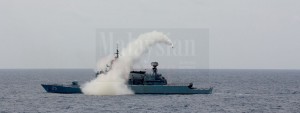
The Sea Skua will be fired from a Super Lynx, of course.
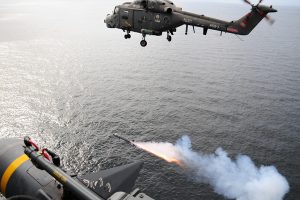
— Malaysian Defence
If you like this post, buy me an espresso. Paypal Payment

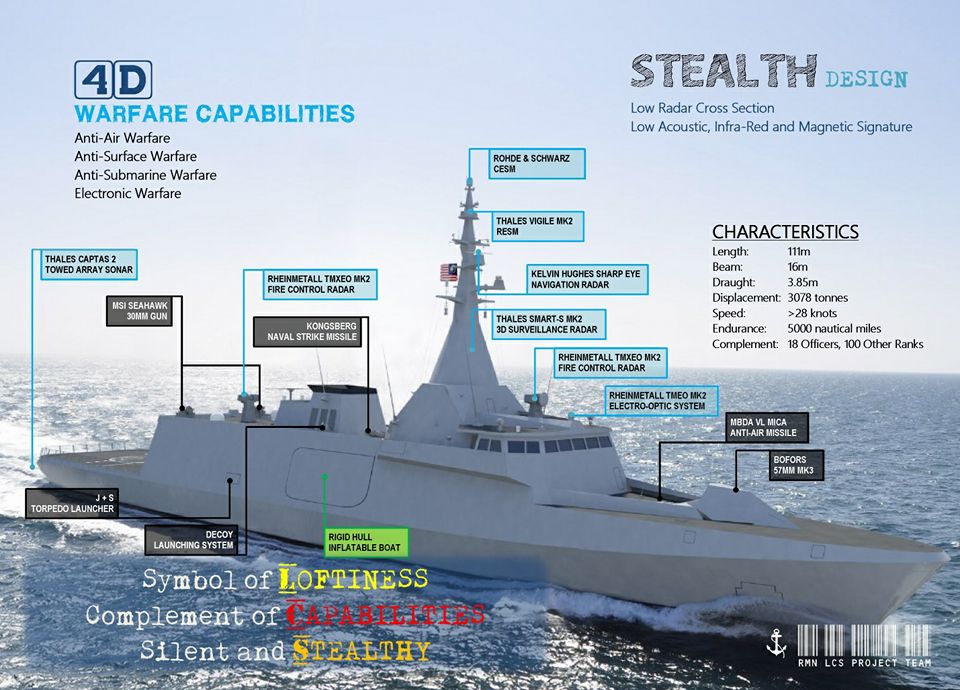
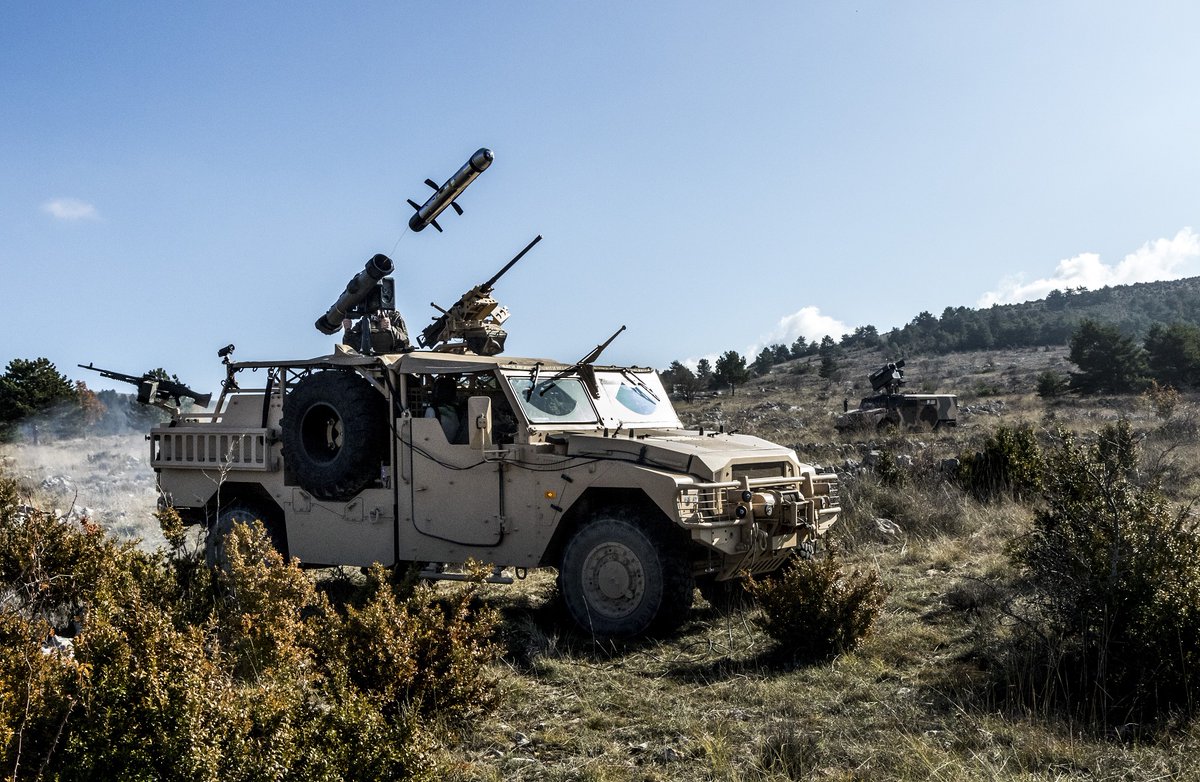
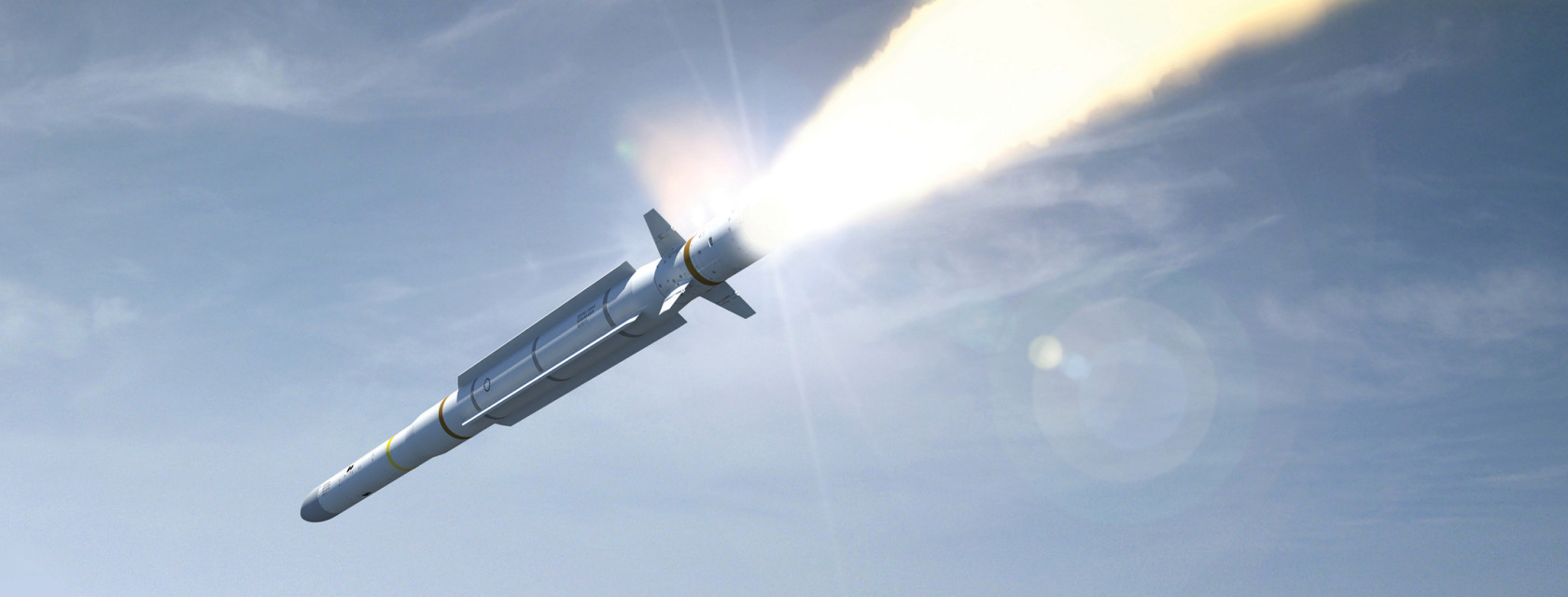
It’s called a utility cover, and I’m pretty sure the the army have a version of it, although I can’t say if it’s standard issue
Such cap is used widespread by both thais and filipino marine corps, considering they formed their marine corps according to USMC pattern and may adopt the caps as well
What is Eks?
Reply
Exercise..
dundun,
It’s called an 8 pointed cover or utility cover in marine corps parlance.
Outside the USN and USMC, It is only used by navies and marine corps that borrow US traditions. Our navy inherited Royal Navy traditions including dress and is one of the few that wears a beret as a result, which is something never worn by navies in the US pattern. I don’t support our wearing both the beret and the 8 pointed cover because it suggests that we are ignorant of the world’s most well known dress traditions (as well as our own) and are willing to copy others without regard. It could hardly have been worse if we had adopted a USN style sidecap to complement our uniforms.
On the other hand this wanton mixing does parallel the great variety of vessels we have.
Will be interesting to see the results if feedback forms were provided to the rank and file; asking them about how they feel about the digital camo.
Personally, I don’t see the purpose of issuing camo to RMN ship crews. We’re just following or copying what the Americans, Australians and others have done. No idea what No. it is but the dark blue trousers, light blue shirt and beret that has long been worn looks smart.
I find that having Anti ship missile equipped a good practical way to arm the toothless NGPV. Itd be great if the heli ccan potentially carry NSM in the future witn a longer range.
Off topic
Romania is the latest country to choose the Gowind for its navy.
The contract is for four Gowind corvettes (1 biuld in france, 3 to be built locally) for US1.355 billion, by far the cheapest Gowind contract to date.
The countries so far choosing Gowinds are Egypt, Malaysia, UAE, and Romania.
There is no purpose of specific camo for both navy and airforce personnels. As is for the Bomba. The airforce and navy are better off wearing either their normal non-camo work attire, or wearing standard army camo.
Outside of the malaysian army, there is IMO little regard to military historic traditions and honors. I disgress for example the esteblishment of new airforce skuadrons when there are plenty of historic skuadron numbers are still disbanded.
@ sg way
Dont look only at the ship. Look at the overall picture. Arming the current NGPVs will not change for example the current situation where chinese coast guard ship is harassing oil and gas exploration and production activities (latest with Sarawak Shell F14 platform and Sapura Esperanza)
“Will be interesting to see the results if feedback forms were provided to the rank and file; asking them about how they feel about the digital camo. No idea what No. it is but the dark blue trousers, light blue shirt and beret that has long been worn looks smart.”
The blue solid colour uniform was No. 2B. It had to be tucked in and tended to be tighter fitting than the current camo. The fabric was also less breathable than the camo. I doubt it was at all comfortable to work in or have a parade in.
Unfortunately it also tended to be the only uniform that ratings were issued and was worn everywhere, even through basic training and to the range.
Also it would only have looked smart (subjective) when clean. One benefit of navies wearing camo is to hide dirt and stains sustained in the course of work.
I’m for the navy’s use of camo, just not for the utility cover. Makes no sense having Commonwealth style dress and service uniforms on one hand, and US style working uniforms on the other.
AM
It’s a cap whatever it’s a non issue. Some military even use regular cap to save cost.
If we talk about tradition we might as well as use songkok not only for no. 1 dress but even in a patrol or general duties like the old days (ww2 and the emergencies) but we don’t and for good reason.
Also, about the navy and camo thing? I gusss because navy personnel do land operation/exercise as well and wearing that light blue shirt and black trouser made little sense
http://i.imgur.com/bBqZUdd.jpg
SgWay,
You’re just stating the obvious . Yes it would make sense to arm the Kedahs to enable them to have some means of self defence and for the secondary type roles they are intended to perform in times of conflict.
The problem however is that it’s just not a priority given the limited funds available and the threat environment. The RMN still has a requirement for 6 helos and both Seawolf and Sea Skua will have to be replaced in the near future.
Not to mention the fact that the deal for MIca has been put on hold and it remains to be seen in the coming years if the LMSs will enter service with the weapons/systems they need.
AM – “navies wearing camo is to hide dirt and stains sustained in the course of work”
Very true but engine room/maintenance/engineering crews wear one piece overalls.
AM – “d US style working uniforms on the other.”
What about the “Special Forces” shoulder tabs worn by Gerak Khas? Very American.
Dundun – “If we talk about tradition we might as well as use songkok not only for no. 1 dress”
This is purely for ceremonial use so it doesn’t count. The only reason we ended up with USMC style caps is because someone thought it was a good idea.
If we really want to stick with tradition and have something practical (as opposed to something that merely looks good) then RMAF/RMN/army people (aircraft support crews, vehicle maintenance personnel, etc) who work outdoors in hot and humid conditions should be allowed to wear issued shorts …
Dundun – “light blue shirt and black trouser made little sense”
Depends. If worn by a ship boarding party or people undergoing fire arms training on land; sure. If however it’s worn by people on a ship I don’t see an issue. The people who do get “dirty” have one piece overalls and at times a 1 one piece fire resistant “Action Working Dress” is worn. AM has a point though when he says the No.2B is not comfortable.
“If we talk about tradition we might as well as use songkok not only for no. 1 dress but even in a patrol or general duties like the old days (ww2 and the emergencies) but we don’t and for good reason.”
No one is saying we should do away with working caps and other necessary items. What we’ve done is deliberately worked a traditional element (with no practical purpose) into the cap. One that is at odds with the rest of the navy’s uniform traditions. Yes, I agree with you that a plain patrol cap would have been better.
As to our historical use of songkoks, our troops have always had the proper headwear on operations. Yes there are artworks and posed training pictures of the Malay Regiment in Songkoks from WW2, but it’s clear that they had Mk 1 helmets.
As to the pic you posted, I can only speculate that helmet cover happened to be what the helmet was delivered with or was used ad hoc in the days before the navy settled on a service wide camo pattern. It appears to be Chinese Type 07 pattern and is widely available.
Nah the navy had excercise with PLAN couple years ago so the helmet prolly belongs to PLAN and they lent them to RMN personnel
“What about the “Special Forces” shoulder tabs worn by Gerak Khas? Very American. ”
True and the same for their lanyards. Admittedly I don’t know if it is a course tab or a unit tab, and I’ve good reason because the army’s Airborne tab is a course tab and the PAC tab is a unit tab. More inconsistency here.
It’s been a while since I’ve seen this tab on a GGK trooper. Not sure if the tab is still authorised for wear, simply not awarded nowadays, if the course is still being run or something else.
Another matter is that GGK has three numbered subdued unit patches like everyone else, but has been seen to wear their old full colour patches for internal parades.
http://www.utusan.com.my/mega/wira/hut-53-ggk-bukti-kesetiaan-1.725872
Malay Regiment troops in the 30’s and 40’s were equipped in a similar way to other Commonwealth troops, including those of the British Indian army; from their Enfields to their Pattern 37 webbing, right down to their shorts.
The pic of the Chinese helmet cover first appeared in Perajurit – always wondered what was the story behind it. I’ve seen an army jump instructor wearing a Brit DPM T-shirt and troops on a firing range wearing chest webbing – maybe private purchase, maybe not. Sailors on the Lekuis have British Mk6 helmets because these came with the ships.
More than 20 years after the Bosnia deployment ended, we still see PLCE bergen’s (originally bought for use in Bosnia) used by 10 Para and Gerak Khas. These are very well made and built to last. I bought one many years ago and the one problem using it here is that rests high on the shoulders; can get stuck on vegetation. PASKAL stands out as the only SF unit allowed to have its own camo : U.S. woodland pattern produced locally and to a different fit compared to the original.
I have no issues with new uniforms or headwear being introduced but it must be practical and of good quality (senior officers received digital pattern camo made from a different material); not because someone in the position to do so thought it’s looks good or because we have to keep up with the times based on what others do.
AM,
Not sure which lanyard you’re referring to but if it’s the blue one, this is to signify the unit’s previous association with the Royal Marines.
On the PUTD units.
If follow the british army air corps (AAC) structure – the PUTD 881 should be a squadron, not a regiment.
If follow the US army aviation regiments structure, PUTD 881 would be a company.
It was stood up originally as PUTD squadron 881 on 11 Mac 1995 with alouettes, why is the designation now changed to a regiment?
As i understand it; there are 2 helicopter squadrons that are part of the army’s Aviation Corps; which although has the “Corps” designation, is still a “regiment”; i.e. if I was part of the “Aviation Corps” and someone asked me what my “regiment” was, I’d reply the “Aviation Corps”.
Similarly if I started out my career in the Aviation Corps but was later transferred to another posting, my arm of service would still be the Aviation Corps.
The term “regiment” can have a broad meaning. An artillery regiment in the British sense would have several batteries, each consisting of several troops but it could also mean just a single battery. For others an “artillery regiment” could mean several battalions, each consisting of several batteries.
Some air arms have “wings” but this is just an admin thing. The “wings” could consist of just a single squadron with support elements, rather than several squadrons.
Yes there is currently 2 units
881 with A109
882 with nuri
Technically they are squadron/company sized units but each of them is called a regiment now. A regiment IMO should be battalion-sized. Probably an easy way to put high ranking officers commanding small units?
“An artillery regiment in the British sense would have several batteries, each consisting of several troops but it could also mean just a single battery. For others an “artillery regiment” could mean several battalions, each consisting of several batteries.”
To be clear, the British have only one Royal Regiment of Artillery which is an administrative grouping of all British army artillery (and today, air defence and ISTAR) units. It is composed of several battalion-level tactical units which by quirk of name are also called Regiments, themselves composed of company-level tactical units called Batteries. They and the three SAS Regiments are the British army’s only tactical units named Regiments.
We generally put our arms of service under one administrative Regiment (except the infantry). Quirks include the PUTD and GGK with tactical units named Regiments under an administrative grouping that is not known as a Regiment.
Singapore has a modified British style. They have one Formation per arm of service comprising indefinite numbers of battalions. Some Formations are named Regiments. Formations have some responsibility for implementing and developing the training syllabus but battalions are operationally part of a brigade. One quirk there is that under the Singapore Artillery, battalions are named Battalions (rather than Regiments) but companies are named Batteries.
“RMAF/RMN/army people (aircraft support crews, vehicle maintenance personnel, etc) who work outdoors in hot and humid conditions should be allowed to wear issued shorts … ”
Sounds good to me, at least in a garrison environment. Shorts are still worn in garrison by RAAF ground crews and security police. The Russians introduced a similar hot weather uniform a few years back. Neither are camoflage uniforms. The SAF “admin” kit is shorts, T shirt and running shoes, worn when not training and not in an office.
But we all know this won’t happen for cultural reasons. Even our PT uniforms must have long nylon trousers.
“As i understand it; there are 2 helicopter squadrons that are part of the army’s Aviation Corps; which although has the “Corps” designation, is still a “regiment”
A way to look at it is that Regiments, Corps, PUTD and GGK have the same status as branches of service (except for the infantry which is a branch with several Regiments).
“Similarly if I started out my career in the Aviation Corps but was later transferred to another posting, my arm of service would still be the Aviation Corps.”
Now, if you were transferred, would you still wear your original beret and regimental belt?
In the SAF’s case, practice is not consistent and different people have told me you can and cannot wear your original beret (they don’t have regimental belts).
I’ve seen that people who originated in “prestigious” arm do try to keep wearing their original beret. Depending on the CO, they might or might not be made to switch. And people transferring into a more prestigious arm do try to “upgrade.”
In particular, the Commandos don’t allow “upgrading.” A clerk working in the Commandos cannot wear the Commando beret because he hasn’t earned it by passing the initial course. He would have to wear the dark blue beret mostly worn by support arms. This was despite the fact that, until recently, most clerks never went to centralized training and never spent a day in any such regiment.
Hi pple just wanred to give my 2 cents…is it necessary to follow dressing code according to tradition of the commonwealth?
The British have money to spend on their military equipments and attire..they can have bush attire…winter attire..spring attire etc etc
These attire is necessary because of Europe climate.
So ask ourself…with budget so tight must we waste money on so many type of attire…example no3…no1…no4 attire.
Let the Armed forces break those tradition n stick only to camo uniform…be it for training…seminar…parade etc etc.
As for the ground crew half uniform plus t- shirt will be enough..
This really cut the unseen cost of the Armed forces.
AM – “I’ve seen that people who originated in “prestigious” arm do try to keep wearing their original beret”
In the British army they do, no idea if it’s official practice to do so here.
The “prestigious” or most influential arm here of course being the Malay Regiment.
Come to think of it, even as a 10 Para member your “regiment” would be the Rangers, signals, engineers,etc, because you originally came from elsewhere and are still part of that regiment or arm; despite also being in 10 Para.
With the Parachute Regiment it’s different in that newly inducted recruits to the army can attempt P Selection after making it past basic training. With PASKAL it’s the same in that RMN recruits can try to get in the unit but current serving RMN personnel can also attempt selection.
On the Singapore army, I’m surprised they don’t have stable belts.
RedSot,
Without tradition, what do we have? It’s tradition that started us off in the beginning and tradition that gives us a sense of pride and belonging. Where would the army be without its regimental system inherited from the Brits and where would the RMN be without all the RN traditions it still maintains?
Over the years we have made adjustments to the traditions we inherited and it’s not as if we’re spending excessive amounts of cash in maintaining our traditions.
Even the Israelis which have cut down ceremonial stuff to the absolute minimum still maintain various uniforms. Note that the uniform worn is a vital symbol as the person wearing it represents his/her country. An officer attending an official function – hosted by others – wearing just camo, would reflect badly on his service and country.
The Brits have temperate and tropical camo : the Pattern 86 smock was intended to be worn in temperate climates; the tropical DPM is made of a lighter material, intended to worn in warner climates. They have continued this practice with the MPT camo pattern. Ceremonial or dress uniforms for certain climates are only issued on a “need to” basis.
With oldschool thoughts ATM can never attract dip holders n graduates for ATM to man all the rocket science equipments thats for sure.
Ask any malaysian youth about ATM thier first thought is oldschool…old equipments n weapons of choice for the ATM is tombak n keris….ATM is exclusive only for kampong boys
who have no choices in the modern world….cheers oldboys..
Reply
Not really lah if you read the stories of recent graduation you will realise the current recruits are a mix batch now days some urban apart from rural areas as well. But this is not just a Malaysian phenomenon it the same as well in other countries where the soldiers are volunteers as well.
“On the Singapore army, I’m surprised they don’t have stable belts.”
It shouldn’t be surprising. The SAF is a military that was engineered from ground up and where regimental traditions don’t evolve. Many of the decisions taken on the SAF’s traditions were made in the interest of expediency (for example, the navy uses the army rank structure, all services wear berets and very similar uniforms.) It was also decided not to maintain lineage relationships with British regiments (since the government says the British did nothing.) Therefore there is very little in the way of regimental identities. Another factor is that the majority of its members serve for a short time and are made to be there.
In the SAF, collar badges are not by the formation or regiment that one serves in but rather the one that his vocation comes under. Berets can follow either, Shoulder patches are battalion distinctive patches.
RedSot – “With oldschool thoughts ATM can never attract”
You need to do a better job clarifying what you mean by “old school thoughts”. Also your definition of what constitutes “old school thoughts” and their relation to the MAF may differ greatly from actual reality.
RedSot – “Ask any malaysian youth about ATM thier first thought is oldschool…old equipments n weapons of choice for the ATM is tombak n keris”
First of all, you’re generalising by using “any”. Secondly if indeed some youths are that ignorant and gullible and can’t do some basic research; then they’re probably the wrong human material for the MAF.
RedSot – “ATM is exclusive only for kampong boys”
RedSot – “cheers oldboys”
Get with the times : it’s 2019 and not 1964 or 1986 anymore. Granted, a large percentage of recruits may come from rural backgrounds but this is similar in many other countries and in Malaysia; increasing urbanisation means that there are less “kampong boys”. Think “old boy”.
“With oldschool thoughts ATM can never attract dip holders n graduates for ATM to man all the rocket science equipments thats for sure.
Ask any malaysian youth about ATM thier first thought is oldschool…old equipments n weapons of choice for the ATM is tombak n keris….ATM is exclusive only for kampong boys”
Are you saying our recruiting problems are caused by uniform traditions, old equipment or something else? This is a whole other discussion and it might be worth starting one.
Obviously there are many factors here. The reality is that even if the ATM did not operate under any resource constraints, its recruits would still be subject to the quality of manpower in society and the number willing to join. For example, ATM can’t do much about the standard of English.
“More than 20 years after the Bosnia deployment ended, we still see PLCE bergen’s (originally bought for use in Bosnia) used by 10 Para and Gerak Khas.”
What was the point of buying the Bergens for use in Bosnia instead of using the standard pack- was it not big enough or tough enough?
Were we moving long distances on foot without the benefit of vehicles or carrying anything that we don’t carry here?
AM,
Help was provided by the Brits. that included a training team sent to Sungai Patani (including some SAS men); as well as Leylands (fitted with DROPS) and Land Rovers.
We also bought a quantity of DPM smocks and PLCE bergens. My guess is that the ALICE based bergen we used during that era did not have the internal capacity we wanted. In Bosnia however, most of the patrols we did was in vehicles and the foot patrols were of short duration, not requiring bergens.
“I was part of the “Aviation Corps” and someone asked me what my “regiment” was, I’d reply the “Aviation Corps”. Similarly if I started out my career in the Aviation Corps but was later transferred to another posting, my arm of service would still be the Aviation Corps. ”
Actually, why is this the case? This got me thinking- does one already belong to any regiment when one signs up or at the point one is considered to have become a soldier (graduating from basic training or officer training perhaps)? Otherwise, why would your first regiment be your only one?
Reply
Its usually after graduating from basic training or commissioning as an officer.
Yes its difficult to change your regiment once you are commissioned into service. Its usually done, mostly when one tries out for GGK or the air wing